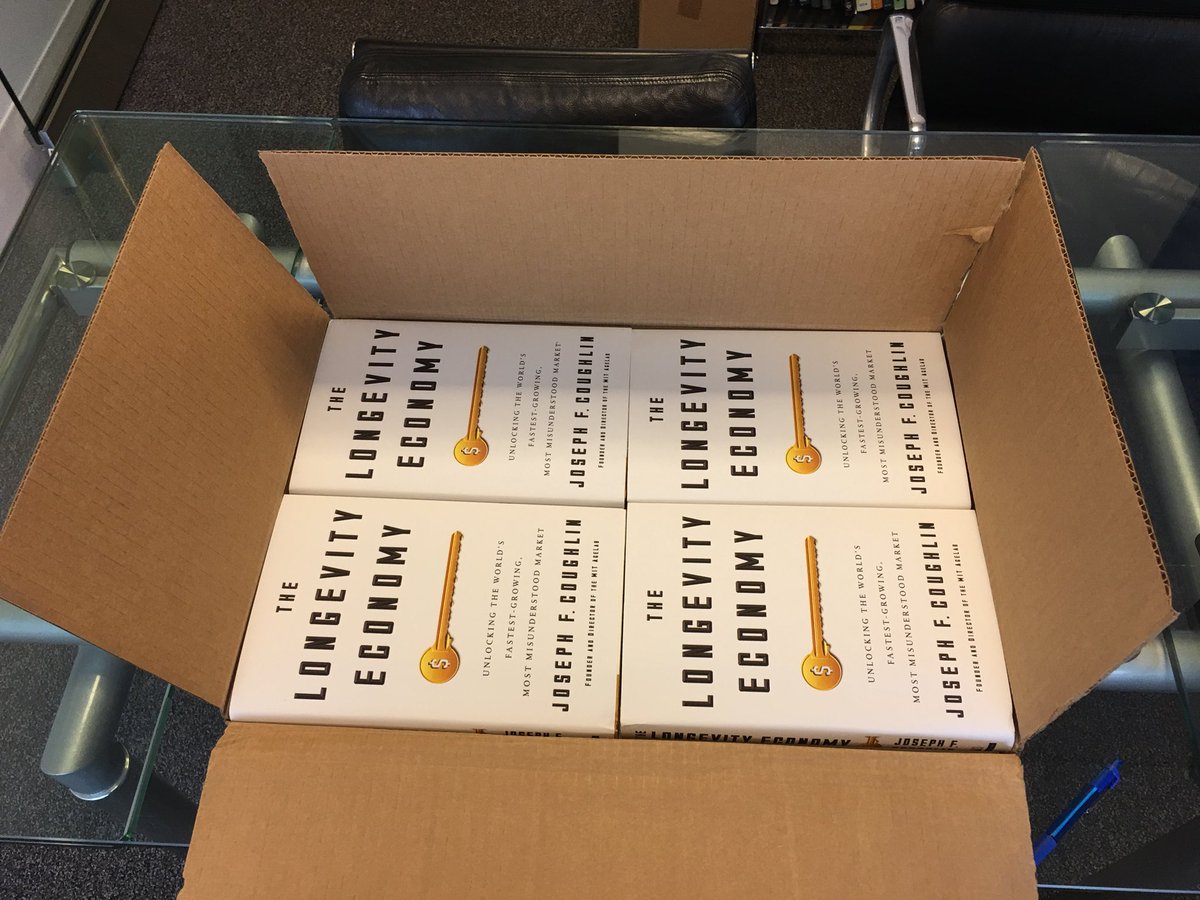 Harry (Rick) Moody, former Vice President and Director of Academic Affairs for AARP, tackles disillusionment in an engrossing piece for The American Society on Aging. He opens with a humorous, self-deprecating story about not giving a presentation on the subject:
Harry (Rick) Moody, former Vice President and Director of Academic Affairs for AARP, tackles disillusionment in an engrossing piece for The American Society on Aging. He opens with a humorous, self-deprecating story about not giving a presentation on the subject:
Baby Boomers: From Great Expectations to a Crisis of Meaning
 … I had given many presentations at conferences on aging, but this session turned out to be unique: I sat on a chair at my poster session for two hours and not a single person came by. Not one. Talk about disillusionment!
… I had given many presentations at conferences on aging, but this session turned out to be unique: I sat on a chair at my poster session for two hours and not a single person came by. Not one. Talk about disillusionment!
Rick goes deep, quoting and/or referencing Robert N. Butler, Carl Jung, Charles Dickens, The Buddha, Erik Erikson, Viktor Frankl, and others. His take, it seems to me, is not to define disillusionment as some sort of generic depression - but as a wisdom-inducing experience, perhaps not welcomed but ultimately enlightening.
The Danish author Isak Dinesen once said: “All the sorrows of life are bearable if only we can convert them into a story.” Are we perhaps telling the wrong story about old age—namely, that we can “fix” it?
Rick Moody’s Human Values in Aging Newsletter has over 10,000 subscribers. It’s free w/ no advertising. A personal newsletter. No privacy-invading shenanigans. Email Rick and he will add you to the list.
 While Rick goes deep, Chuck goes shallow – simply sticking a finger in the ocean and wriggling it around. Way back in 2005, in my book Advertising to Baby Boomers, a chapter dealing with some of the same issues:
While Rick goes deep, Chuck goes shallow – simply sticking a finger in the ocean and wriggling it around. Way back in 2005, in my book Advertising to Baby Boomers, a chapter dealing with some of the same issues:
Don’t Paint Too Rosy A Picture
A recent article in USA Today asks us to “take a moment to journey forward to 2046, when 79 million baby boomers will be 82 to 100 years old.”[i] A paragraph later, the reporter asks, “So just what kind of America will be forged by this crowd of geriatric goliaths?”
Excuse me for being an unassuming ‘David’ (or even worse, a genocidal Grim Reaper) but I doubt very much that all 79 million Baby Boomers in the U.S. will still be alive in forty years, swaggering like giants – unless the medical establishment is holding out on me.
The good news you know: many Baby Boomers will live longer, healthier lives – more so than in any previous generations. The bad news you also know: a huge chunk of Boomers will pass on, and another huge chunk will be dealing with acute diseases and afflictions.
The problem is that well-meaning articles in the press like the USA Today piece, along with mountains of 50+ marketing fodder, are setting up Boomers for a psychological fall. There will be a backlash.
Not being a therapist, I won’t diagnose – but if it were beaten into my head over and over that things were going to be just peachy for the next forty years, that my same-aged friends will all be around laughing and cavorting while leading meaningful, vigorous lives—then, shock of shocks, many of us become incapacitated and/or drop and die – I will feel cheated. I will become depressed and disillusioned. It will happen even if I’m one of the ‘lucky’ healthy ones.
Ask today’s 80+ year olds about this or that and you’ll probably find that many are surprised (but relatively pleased) they’re still alive. They believe they’ve beaten the odds, for whatever reasons. Jump twenty-five, thirty years: if the myth of the non-dying, perfectly healthy Baby Boomer persists, folks in the aging industry are going to have millions of very angry octogenarians their hands. They might even blame you for all those false promises.
How should this be dealt with by marketers and advertisers? Contrary to popular myth, Baby Boomers do not believe that they are still teenagers or young adults. (Some probably do, but they need therapy.) Boomers are slyly redefining what it means to be the ages they are. Included in this new definition are some youthful attitudes – but the real change is that instead of winding down, many are winding up. We’re not ‘looking forward to retirement,’ we’re looking forward to new lives, new challenges. Only a small percentage will opt for pure retirement.
This is all part of redefining what it means to be the ages we are. It may seem to some as pathological, believing and acting as if we’re eighteen or twenty-five – but that’s because pundits and experts suspiciously eyeing this gargantuan, spirited, unwieldy and varied hoard of middle-agers have nothing to compare it to. The only conclusion they can come to: Baby Boomers must a bit daft.
There is a big difference between thinking you are younger than you are – and not thinking that you are old. This ‘night and day’ distinction may confuse many pundits, but it does not confuse most Boomers.
Much of this new, positive attitude about our future has to do with being the beneficiaries of so many fast and furious medical advances. Some we have already taken advantage of, while others are ready and waiting for us – or right around the corner. A good example is joint and hip replacement surgery. The cane industry is in the doldrums, and we’re hoping it will never recover.
Another medical advance (still in its infancy, from what I’ve read) is pain management. This promises Baby Boomers and successive generations freedom from a fear that haunts all as we age.
There has been plenty of press about Baby Boomers and their dread of Alzheimer’s. Not much of a surprise. Alzheimer’s affects many of our parents, we’re caring for them – and nothing frightens us more than not being in control of our own destinies. However, from what I’ve read there may be some breakthroughs within the next twenty years. That’s very good news.
Am I painting too rosy a picture here? Isn’t this something I was railing against in the first few paragraphs?
Yes, but with a big difference. All the examples above have to do with the quality of life – not the quantity.
If I were digging into a marketing/advertising campaign for a client in the aging industry, I would extract as much quality inherent in the product/service – and toss out any (or most) mention of longevity. This would hold true even with basic nutritional and exercise products. A significant chunk of people who eat only healthy foods and exercise regularly die of heart attacks, get cancer, are the victims of all sorts of diseases and afflictions. You can’t fool me.
But the quality of their lives in every respect will be superior to the ones who don’t take care of themselves, or avail themselves to what’s out there in the aging industry market.
Nobody can promise you that you’ll live to be a hundred. However, you can (more or less) make a good argument that healthy lifestyles and advances in modern medicine will offer you a quality life after sixty that no preceding generation had ever imagined.
[i] 2046: A boomer odyssey
By Marco R. della Cava, USA TODAY October 27, 2005
_____
There’s nothing wrong with being positive and aspirational – you just have to temper it with dollops of reality so your marketing won’t be dismissed as pie-in-the-sky nonsense.
 The famed Soothsayer and advertising gadfly has been startling the world for nigh on a decade with his mundane prognostications. Over the last eleven months, he’s been featured in nearly every other post.
The famed Soothsayer and advertising gadfly has been startling the world for nigh on a decade with his mundane prognostications. Over the last eleven months, he’s been featured in nearly every other post.… A new survey found that most consumers say they rarely or never mean to click on ads served up on their phones …
… The more people use smartphones, the less they’ll tolerate silly graphical doodads mucking up their small screens ... Advertising on smartphones will be considered an annoyance, invasive, and rather dinky …
04 November 2013
22 September 2015
 There are more. But NostraChuckus’ Crystal Ball of Common Sense is getting hazy now.
There are more. But NostraChuckus’ Crystal Ball of Common Sense is getting hazy now.


 03 October 2016
03 October 2016


 Some are all over Skype, video and music uploading and downloading, research, education, travel planning, shopping—while eschewing blogging, communities, and web page design. Or it’s the other way around. Or variations thereof. When it comes to new technology, most Baby Boomers learn only about what interests them, what they believe will be useful. They don’t feel the need to know everything there is to know about technology, computers, and the web.”
Some are all over Skype, video and music uploading and downloading, research, education, travel planning, shopping—while eschewing blogging, communities, and web page design. Or it’s the other way around. Or variations thereof. When it comes to new technology, most Baby Boomers learn only about what interests them, what they believe will be useful. They don’t feel the need to know everything there is to know about technology, computers, and the web.” …. An odd mix of technology service providers, health tech vendors (multiple categories), and startups …
…. An odd mix of technology service providers, health tech vendors (multiple categories), and startups …
 Over the past two decades, Joseph F. Coughlin has been busting myths about aging with groundbreaking multidisciplinary research into what older people actually want—not what conventional wisdom suggests they need. In The Longevity Economy, Dr. Coughlin provides the framing and insight business leaders need to serve the growing older market…
Over the past two decades, Joseph F. Coughlin has been busting myths about aging with groundbreaking multidisciplinary research into what older people actually want—not what conventional wisdom suggests they need. In The Longevity Economy, Dr. Coughlin provides the framing and insight business leaders need to serve the growing older market…
 COSTUME 1: SUPERHERO
COSTUME 1: SUPERHERO “It will be the Baby Boomers who will be the first to pick and choose, to ignore or be seduced by leading-edge technology marketing. There’s a simple reason for this. We have the money to buy this stuff. Experts say we’ll continue to have the money for at least the next twenty years. Write us off at your own peril.”
“It will be the Baby Boomers who will be the first to pick and choose, to ignore or be seduced by leading-edge technology marketing. There’s a simple reason for this. We have the money to buy this stuff. Experts say we’ll continue to have the money for at least the next twenty years. Write us off at your own peril.”
![[image[30].png]](http://lh6.ggpht.com/_n77PqIjyySk/SxXC3oAikzI/AAAAAAAADSk/gffR7rgcXdM/s1600/image%5B30%5D.png)
![[childphone.jpg]](http://4.bp.blogspot.com/_n77PqIjyySk/R1mHUznVyTI/AAAAAAAAAxU/aM8hmMa23nA/s1600/childphone.jpg)
 12 March 2009
12 March 2009
![[image[3].png]](http://lh3.ggpht.com/_n77PqIjyySk/S_L5P_rp3bI/AAAAAAAAD4E/3PN9EHXLkAI/s1600/image%5B3%5D.png) Nothing I can think of is as lively and chipper as television in its final throes.
Nothing I can think of is as lively and chipper as television in its final throes.  … That silly retronym “traditional advertising” will remain the premiere force for introducing people to a product or service, along with sustaining its shelf life. Television, print, radio, and billboard ads will continue to have the visceral power they’ve always had – if only for their sheer size, simplicity, and cutting-edge audio/visual qualities.
… That silly retronym “traditional advertising” will remain the premiere force for introducing people to a product or service, along with sustaining its shelf life. Television, print, radio, and billboard ads will continue to have the visceral power they’ve always had – if only for their sheer size, simplicity, and cutting-edge audio/visual qualities.  … For the umpteenth time - The Most Effective Marketing/Advertising Model For Reaching Baby Boomers: What is now called traditional advertising pushing you to an age-friendly, informative product/services web site.
… For the umpteenth time - The Most Effective Marketing/Advertising Model For Reaching Baby Boomers: What is now called traditional advertising pushing you to an age-friendly, informative product/services web site. 